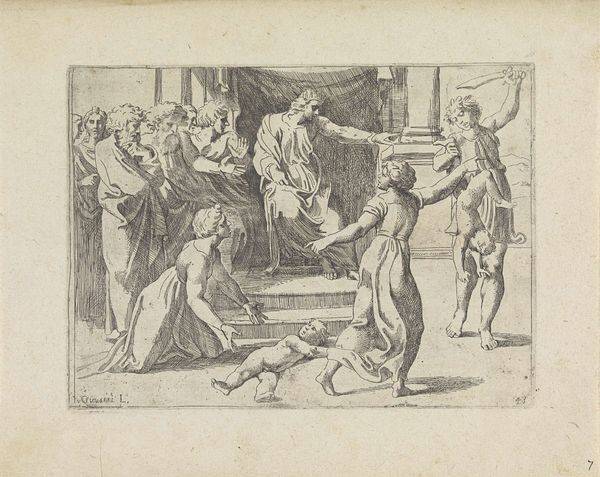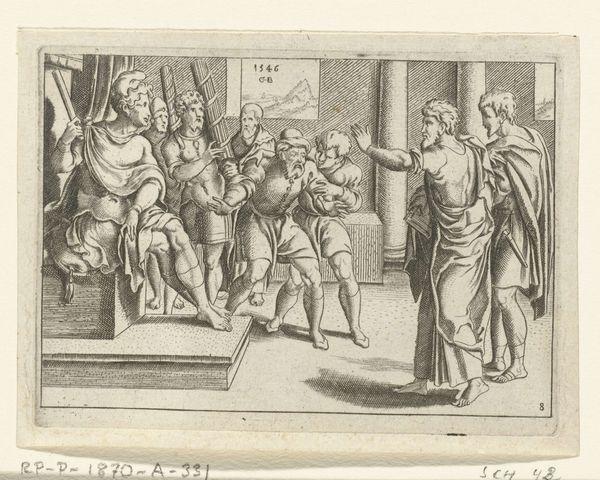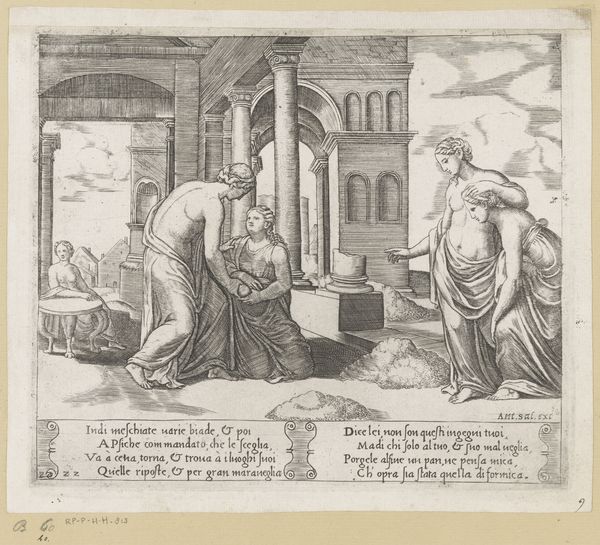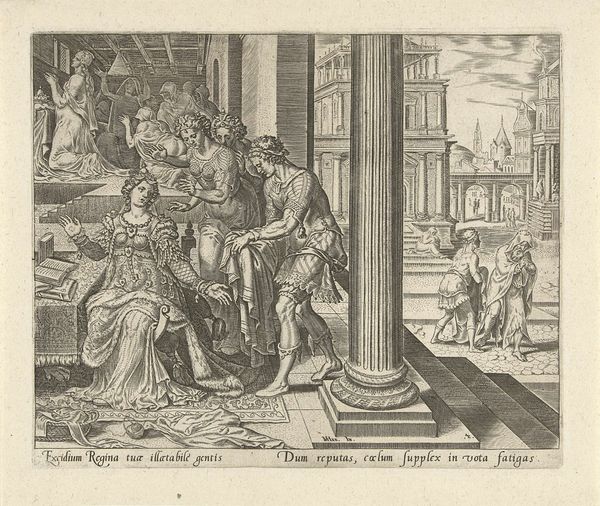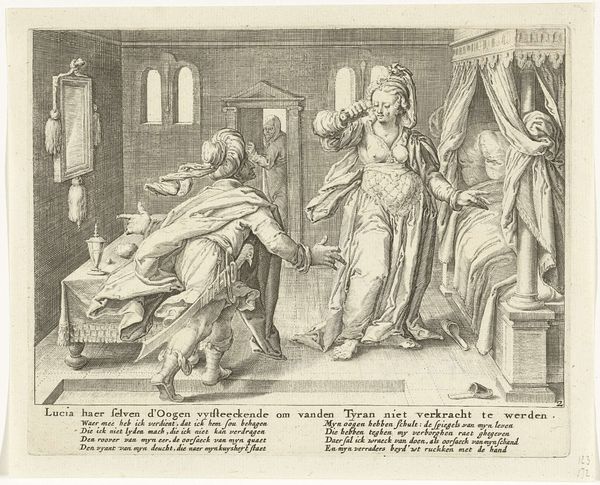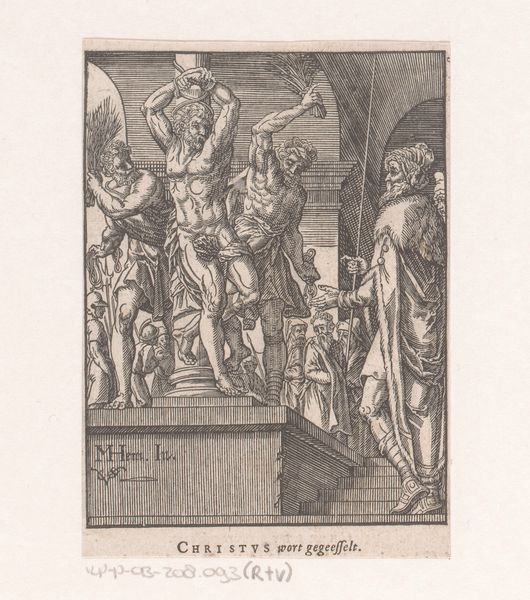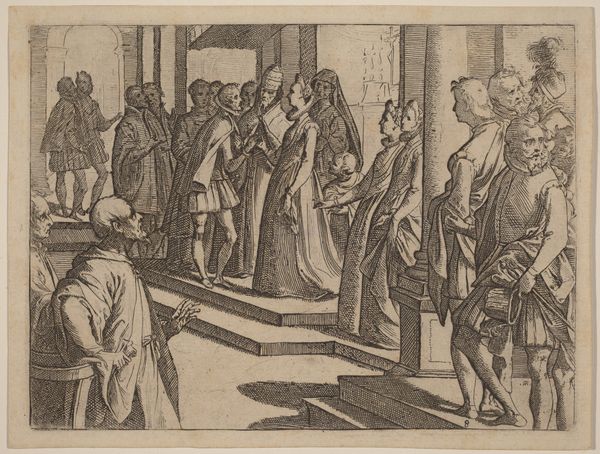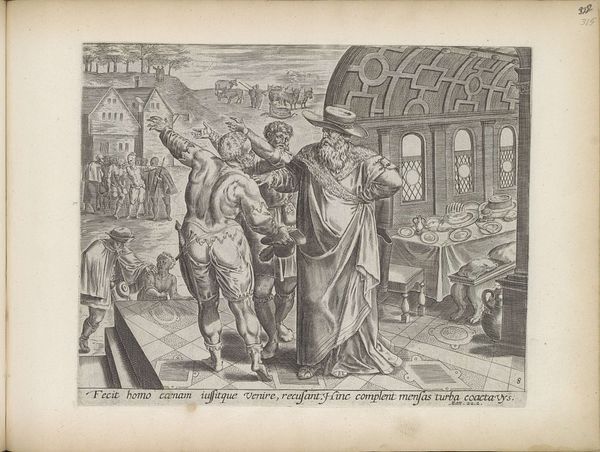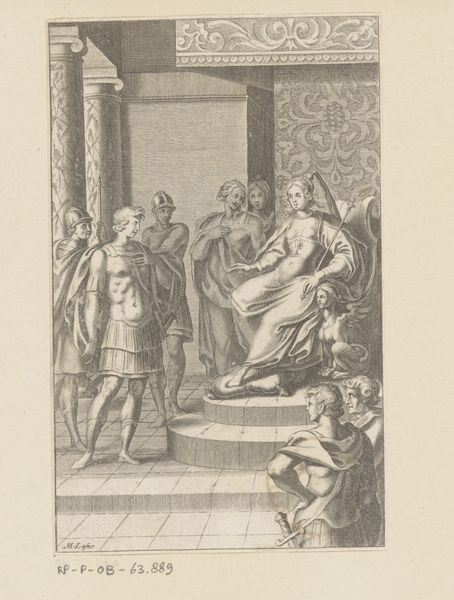
print, intaglio, engraving
#
narrative-art
# print
#
intaglio
#
mannerism
#
figuration
#
line
#
cityscape
#
history-painting
#
engraving
Dimensions: height 104 mm, width 118 mm
Copyright: Rijks Museum: Open Domain
Antonio Tempesta created this small engraving, "Anaxarete ziet de dode Iphis", meaning "Anaxarete sees the dead Iphis", likely in the late 16th or early 17th century. The image depicts a scene from Ovid's "Metamorphoses," where the scornful Anaxarete is turned to stone after witnessing the suicide of Iphis, who loved her. It's a morality tale but also reflects the cultural fascination with classical literature during the Renaissance. Tempesta, working in Italy, would have been surrounded by a society where humanist values were gaining traction, but traditional social hierarchies remained. Notice how the architecture and clothing signify wealth and status, emphasizing the social distance between Anaxarete and Iphis. How does this image use the past to comment on contemporary issues of love, class, and the consequences of cruelty? To understand this work better, we can delve into the history of classical reception and the social structures of Renaissance Italy. Such research reveals the complex interplay between art and its cultural context.
Comments
No comments
Be the first to comment and join the conversation on the ultimate creative platform.

